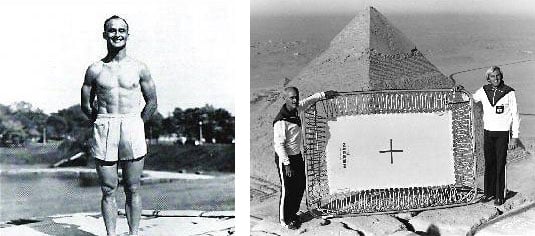Nowadays, trampoline parks are a synonym for fun. But have you ever wondered where they originate from and how trampoline park building has changed over the years? If you want to find out more on this topic, continue reading as this article explores the development of trampoline parks from their origins in the beginning of 1960s through today.
The development of the first trampoline parks and its basic elements
Indoor trampoline park plans clearly show that the basic elements of every trampoline park are trampolines of various shapes and sizes. Let’s first have a look at the history of the trampoline itself. The culture of jumping goes back a long time, while the first modern trampoline was made as late as 1936 by The University of Iowa’s gymnasts George Nissen and Larry Griswold. They established a company together in 1942 and began manufacturing trampolines commercially.
When Nissen started developing his idea, he foresaw the use of trampolines for recreational purposes in an area where several users with special equipment could jump at the same time. He came up with a sport called Spaceball, which shows that he already had plans of building an indoor trampoline park.
Gymnasts George Nissen and Larry Griswold, creators of the first trampoline. (Source: USA Gymnastics)
The first trampoline park attempts failed
Trampolines became important sports and recreation equipment after 1960, and the first trampoline for competitions was made by Ted Blake in 1964 for the World Championship in London. The same time period witnessed people building a trampoline park similar to those we know today. But since then, a lot has changed.
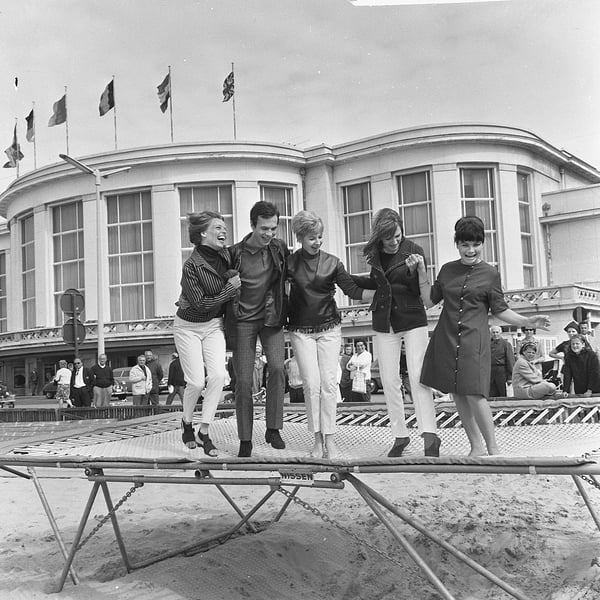
Trampoline as a new way of having fun. (Source: Wikimedia Commons)
In 1959 and 1960, numerous commercial trampoline parks popped up in North America. Trampolining became very popular despite trampoline park visitors having to pay an entrance fee. But soon the rate of accidents and injuries increased so much that trampoline parks acquired the reputation of being dangerous and trampoline park building stopped. Consequently, the interest of the public also decreased for a while.
Year 2000 - A new turning point in trampoline park building
Despite initial failures in trampoline park development, trampolining continued to be a competitive sport. In 2000, it made its first appearance in the Olympics in Sydney, and it remains an Olympic sport to this day. This meant a new opportunity for trampoline park building which was quickly recognized by trampoline park builders.
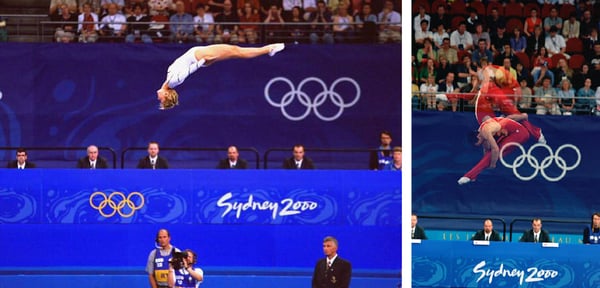
Trampolining gymnastics quickly became an Olympic sport. (Source: NBC Olympics)
In 2002, Rick Platt was the first to build a trampoline park in Las Vegas where all the trampolines made up one large jumping area and were divided only with mats. Originally, he intended for his trampoline park to be used as part of a new sport, which never took off.
However, the idea of jumping on trampolines was very appealing to the local children, and they literally came knocking on the door. This sparked the creation of the entire trampoline park industry as we know it today. Sky Zone, known officially as the first trampoline park, opened in 2004.
A dramatic growth in trampoline park building after 2004
Two years later, Sky Zone opened another trampoline park in a second location. Business grew constantly and in 2017, the company boasted more than 160 trampoline parks across the whole world. Building the indoor trampoline park Sky Zone inspired other trampoline park builders, and the popularity of trampoline parks steadily increased. A single trampoline park in 2004 led to 400 trampoline parks across the whole world in 2017.
The rapid growth of the trampoline park industry came with certain weaknesses as well. Building trampoline parks meant more visitors and consequently a higher risk of accidents and injuries. For this reason, trampoline park owners established The International Association of Trampoline Parks (IATP).
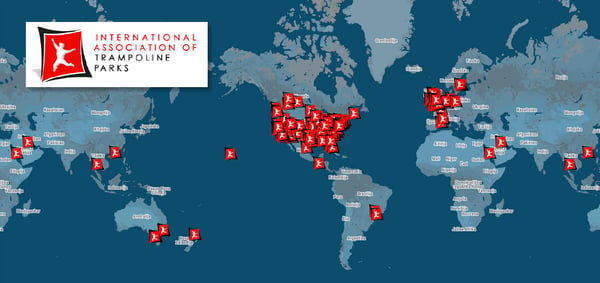
IATP member trampoline parks worldwide. (Source: NBC Olympics)
IATP helps new and experienced trampoline park owners with planning, building and managing a safe building. It also regulates international standards that trampoline park managers and builders must meet.
Modern-day trampoline parks
The popularity of trampoline parks continues to rise as new trampoline parks advertise new concepts of fun. But along with their popularity, their technology and equipment has also advanced, meaning than on one hand they can offer a diverse range of services as well as great security for all users on the other hand. Nowadays, a carefully developed trampoline park plan includes much more than just trampolining.
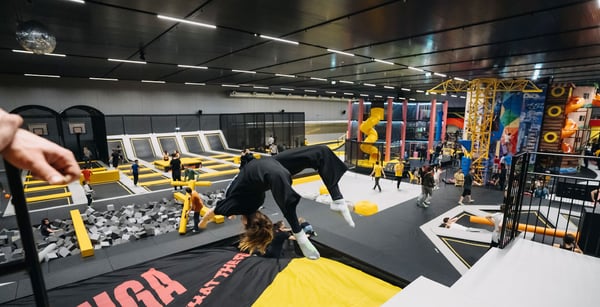 Trampoline park Amazinga in Zagreb (Croatia).
Trampoline park Amazinga in Zagreb (Croatia).
Trampoline parks have become a place of versatile fun and a great business opportunity. But business can only be successful if trampoline park building is meticulously planned and entrusted to trampoline park builders who offer the most comprehensive services.

